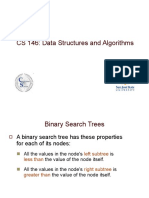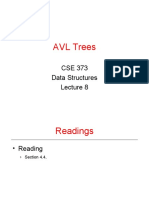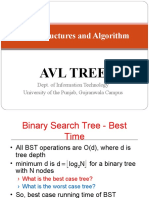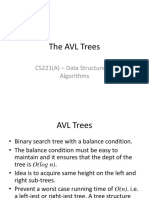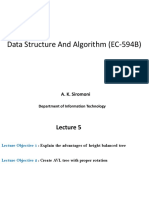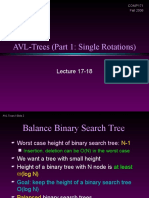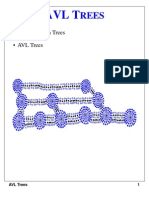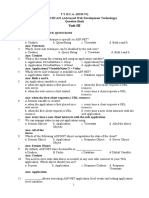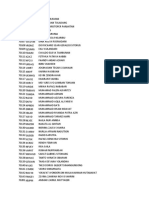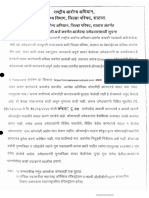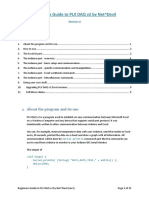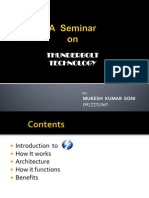0% found this document useful (0 votes)
143 views15 pagesBinary Search Trees: A Binary Search Tree Has These Properties For Each of Its Nodes
The document discusses binary search trees and AVL trees. A binary search tree has the property that all values in a node's left subtree are less than the node's value, and all values in the right subtree are greater. An AVL tree is a binary search tree that maintains the additional balance property that the heights of any node's left and right subtrees differ by at most one. The document describes how to balance an AVL tree after insertions by performing rotations according to the four possible cases where a node becomes unbalanced. It also notes that an AVL tree class can extend a binary search tree class.
Uploaded by
Guna ShekarCopyright
© © All Rights Reserved
We take content rights seriously. If you suspect this is your content, claim it here.
Available Formats
Download as PDF, TXT or read online on Scribd
0% found this document useful (0 votes)
143 views15 pagesBinary Search Trees: A Binary Search Tree Has These Properties For Each of Its Nodes
The document discusses binary search trees and AVL trees. A binary search tree has the property that all values in a node's left subtree are less than the node's value, and all values in the right subtree are greater. An AVL tree is a binary search tree that maintains the additional balance property that the heights of any node's left and right subtrees differ by at most one. The document describes how to balance an AVL tree after insertions by performing rotations according to the four possible cases where a node becomes unbalanced. It also notes that an AVL tree class can extend a binary search tree class.
Uploaded by
Guna ShekarCopyright
© © All Rights Reserved
We take content rights seriously. If you suspect this is your content, claim it here.
Available Formats
Download as PDF, TXT or read online on Scribd
/ 15
